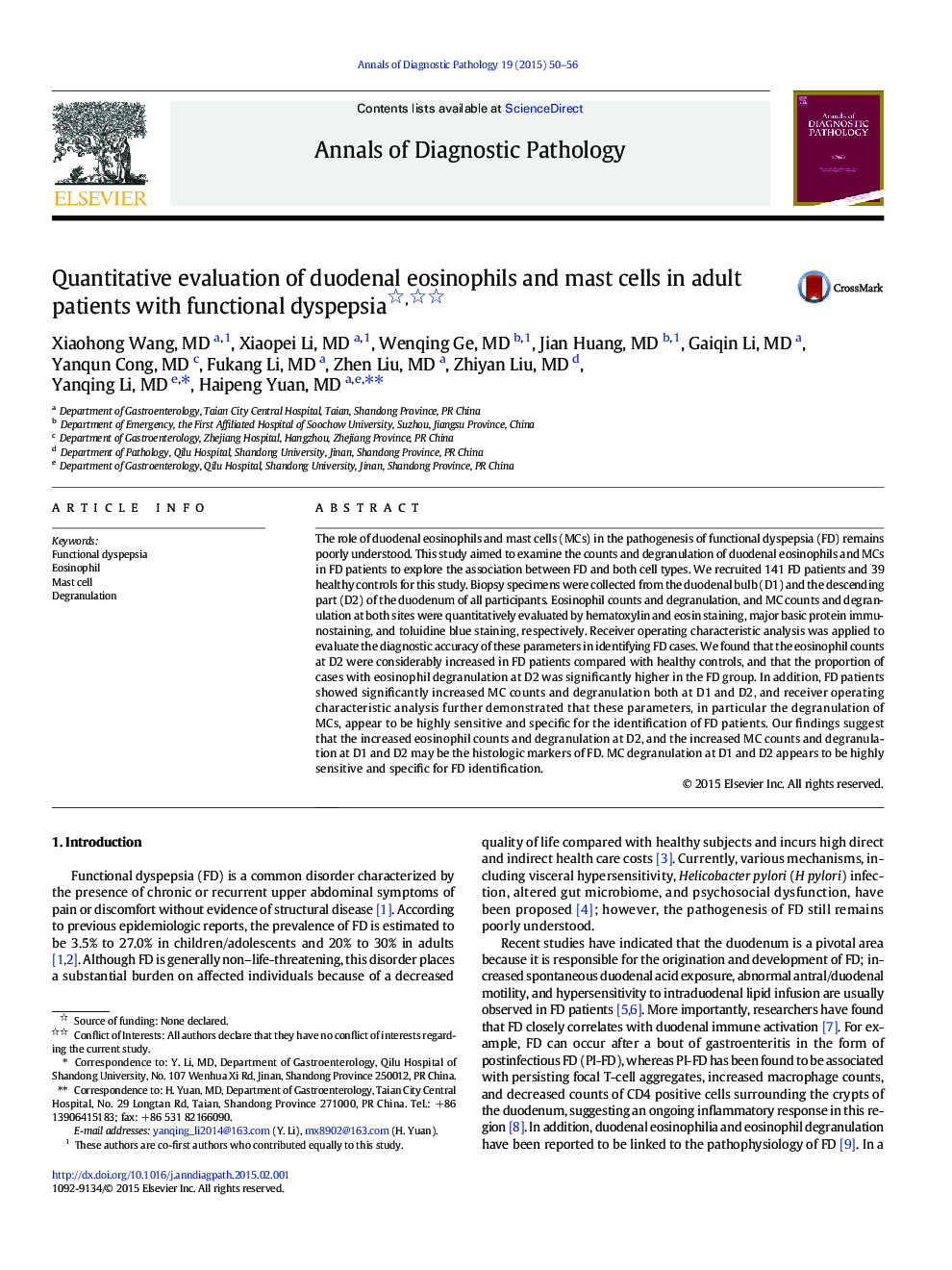| Article ID | Journal | Published Year | Pages | File Type |
|---|---|---|---|---|
| 6214950 | Annals of Diagnostic Pathology | 2015 | 7 Pages |
The role of duodenal eosinophils and mast cells (MCs) in the pathogenesis of functional dyspepsia (FD) remains poorly understood. This study aimed to examine the counts and degranulation of duodenal eosinophils and MCs in FD patients to explore the association between FD and both cell types. We recruited 141 FD patients and 39 healthy controls for this study. Biopsy specimens were collected from the duodenal bulb (D1) and the descending part (D2) of the duodenum of all participants. Eosinophil counts and degranulation, and MC counts and degranulation at both sites were quantitatively evaluated by hematoxylin and eosin staining, major basic protein immunostaining, and toluidine blue staining, respectively. Receiver operating characteristic analysis was applied to evaluate the diagnostic accuracy of these parameters in identifying FD cases. We found that the eosinophil counts at D2 were considerably increased in FD patients compared with healthy controls, and that the proportion of cases with eosinophil degranulation at D2 was significantly higher in the FD group. In addition, FD patients showed significantly increased MC counts and degranulation both at D1 and D2, and receiver operating characteristic analysis further demonstrated that these parameters, in particular the degranulation of MCs, appear to be highly sensitive and specific for the identification of FD patients. Our findings suggest that the increased eosinophil counts and degranulation at D2, and the increased MC counts and degranulation at D1 and D2 may be the histologic markers of FD. MC degranulation at D1 and D2 appears to be highly sensitive and specific for FD identification.
